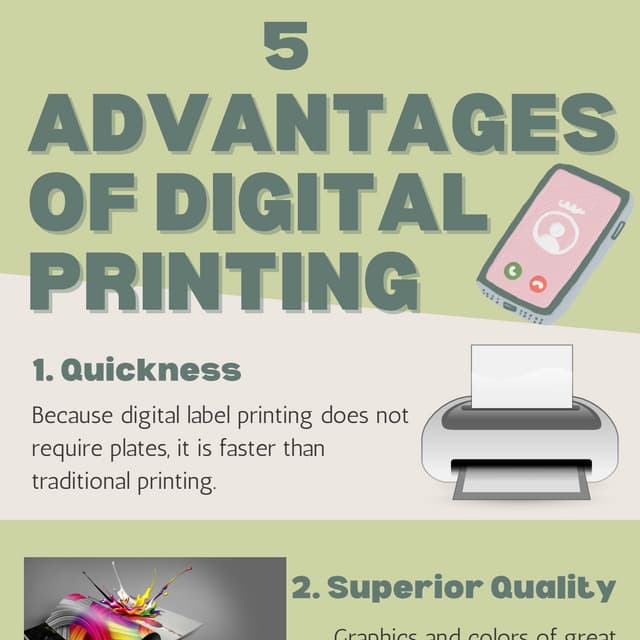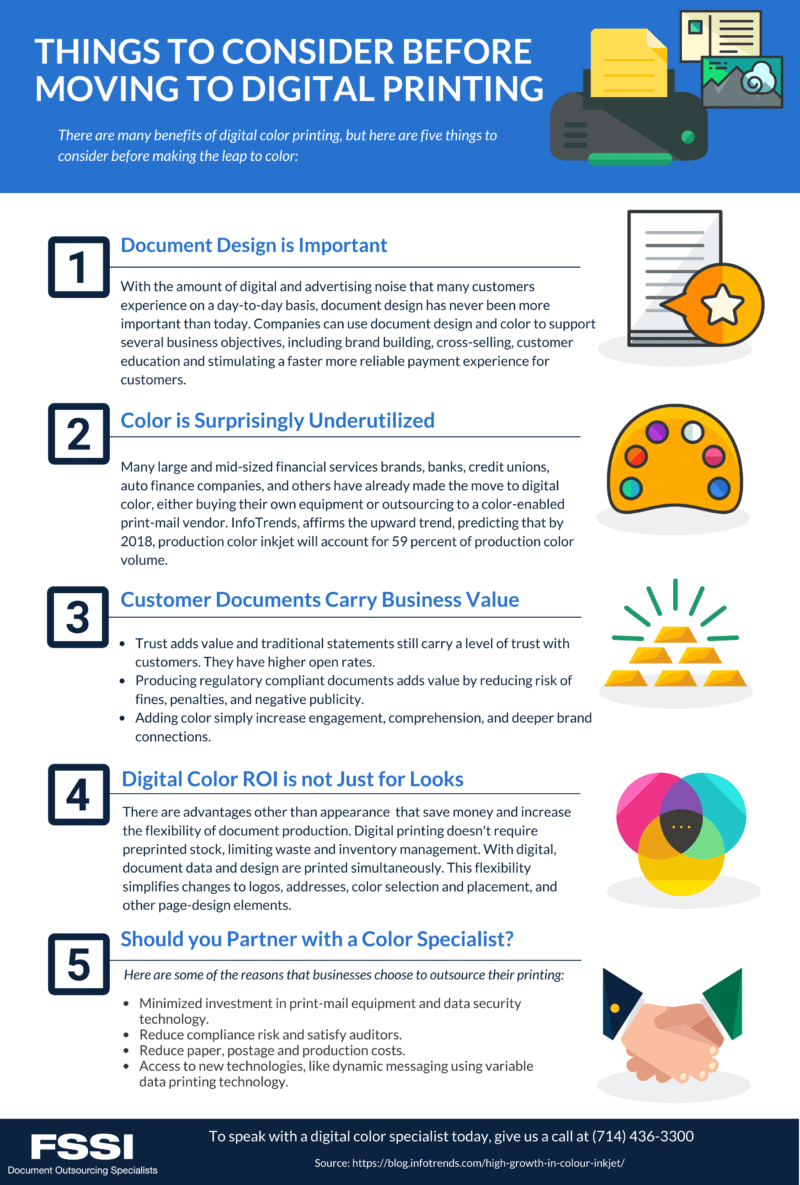Digital Printing Fundamentals Explained
Digital Printing Fundamentals Explained
Blog Article
The Of Digital Printing
Table of ContentsAbout Digital PrintingExcitement About Digital PrintingWhat Does Digital Printing Do?Fascination About Digital PrintingExcitement About Digital PrintingDigital Printing - The Facts
Variable information printing, such as straight mail with personalized codes and addresses, is ideally fit for digital printing. Digital quick printing just needs four actions of design, review, printing and binding to get every little thing done. Digital fast printing has an exceptional benefit: print on need.According to PMMI, digital printing permits brand names and suppliers to react swiftly to customer needs while improving the supply chain, minimizing warehousing price and waste, and appreciating faster time to market. That all audios fantastic, however how does this technology do all that? The significant differentiator of these modern technologies is that there are no set up charges and no plates with electronic printing.
The 9-Minute Rule for Digital Printing
According to Wikipedia, the best difference in between electronic printing and standard techniques such as lithography, flexography, gravure, or letterpress - Digital Printing is that there is no demand to replace printing plates in digital printing, whereas in these analog printing methods the plates are consistently replaced. This causes quicker turn-around time and decreases price when utilizing digital printing.
Digital printing is highly adaptable, so it's easy to make adjustments to the package style promptly. It all goes back to the plates.
With traditional printing approaches, short-run printing is just not feasible. Since a great style can make or damage your item, electronic printing consistently creates high-grade, clear and colorful graphics each time.
Digital printing is the process of printing digital-based images straight onto a variety of media substrates. There is no demand for a printing plate, unlike with offset printing. Digital files such as PDFs or desktop posting files can be sent straight to the electronic printing machine to publish on paper, photo paper, canvas, fabric, synthetics, cardstock and other substrates.
How Digital Printing can Save You Time, Stress, and Money.
According to PMMI, electronic printing enables brands and suppliers to react quickly to consumer demands while enhancing the supply chain, decreasing warehousing cost and waste, and delighting in faster time to market. That all audios fantastic, yet exactly how does this technology do all that? The major differentiator of these modern technologies is that there are no set-up charges and no plates with electronic printing.
According to Wikipedia, the best difference in between electronic printing and standard approaches such as lithography, flexography, gravure, or letterpress is that there is no need to change printing plates in electronic printing, whereas in these analog printing techniques home plates are consistently changed. This leads to quicker turnaround time and decreases expense when making use of digital printing.

About Digital Printing
With conventional printing methods, short-run printing is simply not possible. Since a wonderful layout can make or break your item, electronic printing consistently develops top quality, clear and vibrant graphics each time.

According to PMMI, electronic printing enables brands and makers to react swiftly to customer demands while improving the supply chain, minimizing warehousing price and waste, and enjoying faster time to market. That all noises great, however how does this innovation do all that? The major differentiator of these innovations is that there are no set up charges and no plates with electronic printing.
Digital Printing Can Be Fun For Anyone
According to Wikipedia, the best distinction between electronic printing and conventional techniques such as lithography, flexography, gravure, or letterpress is that there is no demand to replace printing plates in digital printing, whereas in these analog printing methods the plates are repeatedly replaced. This leads to quicker turnaround time and reduces cost when making use of electronic printing.
Digital printing is extremely adaptable, so it's very easy to make changes to the plan style promptly. It all goes back to the plates.

All About Digital Printing
Digital printing is the process of printing digital-based pictures straight onto a selection of media substrates. There is no need for a printing plate, unlike with offset printing. Digital data such as PDFs or desktop publishing data can be sent out directly to the electronic printing press he has a good point to publish useful content on paper, image paper, canvas, material, synthetics, cardstock and other substratums.
Report this page